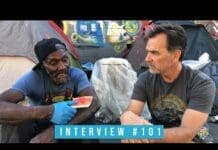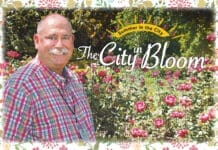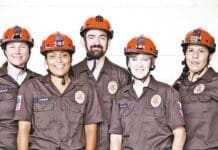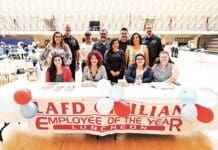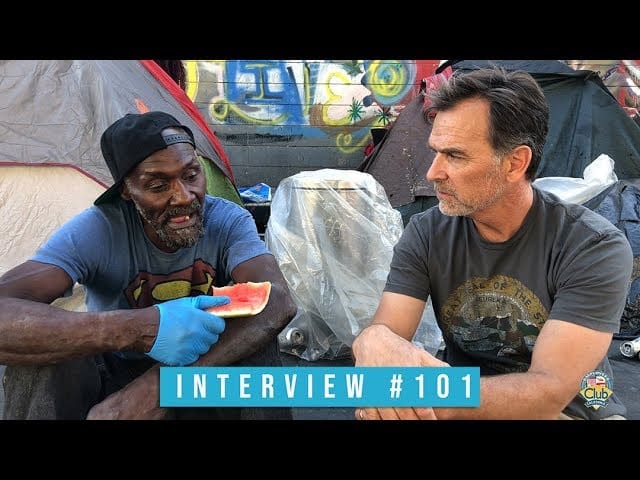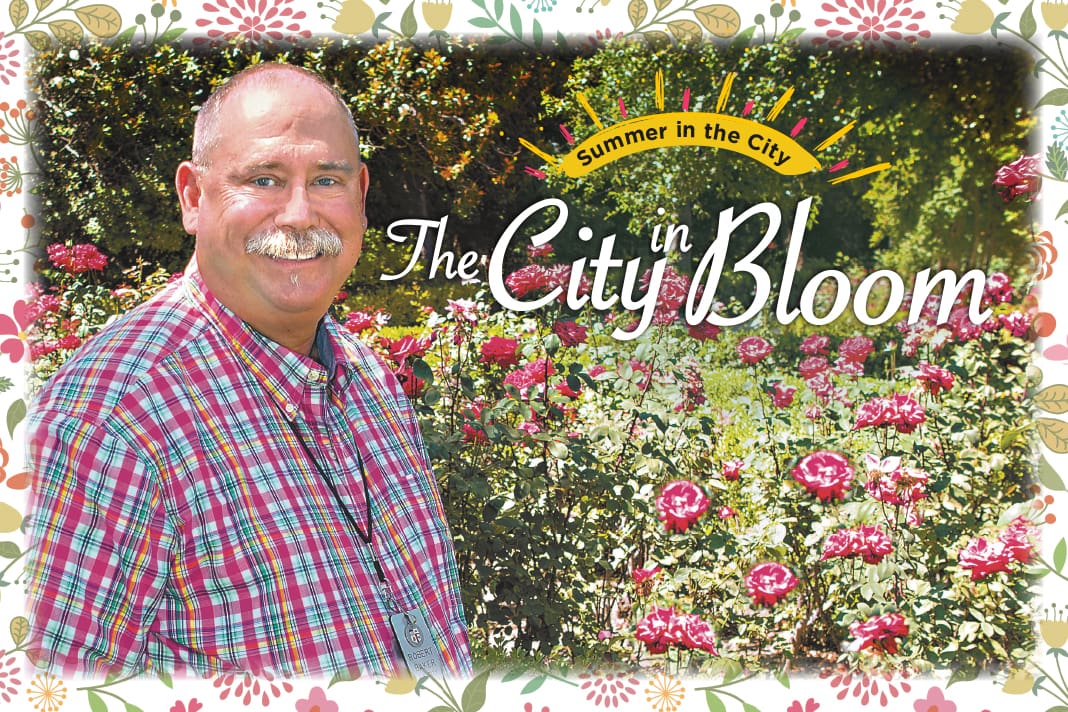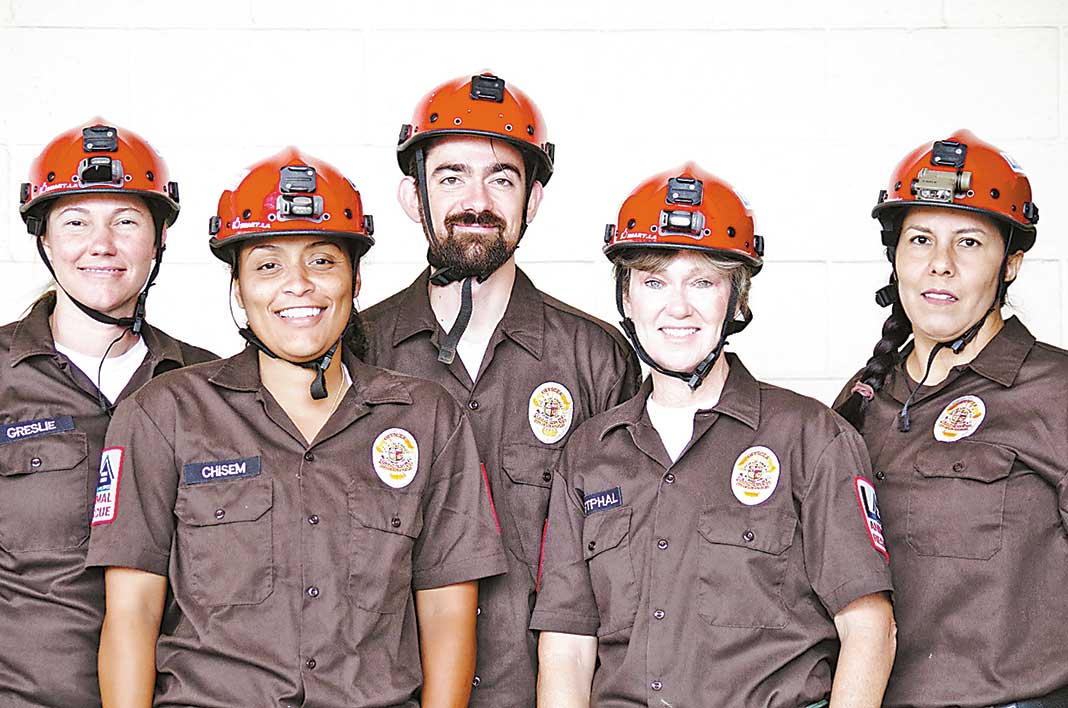RED: c3533e
BLUE:
YELLOW:
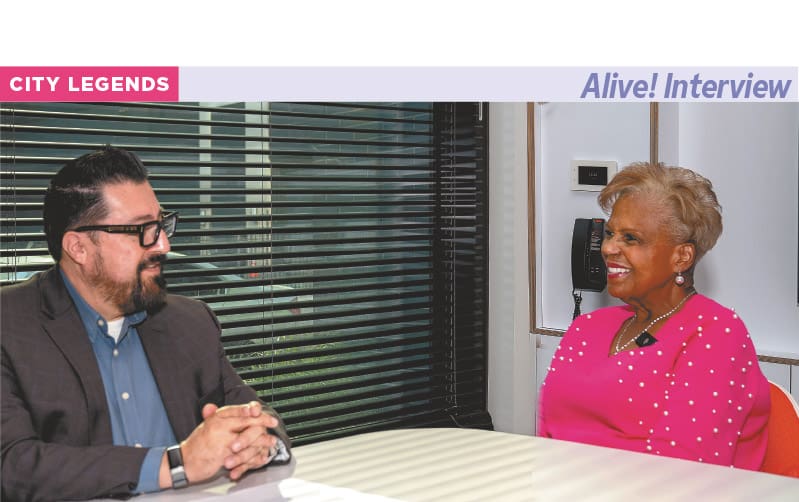

In Part 1 of our robust, frank and exclusive interview with Rita Robinson-Kane from April 2025, Rita Robinson-Kane talked about fear, ambition, and moving up the City charts … with integrity, always.
On Jan. 10, Club CEO Robert Larios and Alive! editor John Burnes interviewed the legendary Rita Robinson-Kane, Retired, General Manager, LADOT, and Retired, Deputy CEO, LA County. She retired from the City in 2011 with 33 years of City service, and from the County in 2018 with seven years of County service.


City to Dungeon to County
Alive!: So you left the City – when you were General Manager of LADOT – because you were lured to the County, not because of some retirement calculus.
Rita L. Robinson-Kane: I was literally called out by Bill Fujioka, then the Chief Executive Officer of Los Angeles County. Bill, whom I knew from our days working at the City together – he was over Personnel, called me one day on the phone when I was at Transportation. I was not always happy to be there because everyone believed they were a transportation expert. However, we got so many good things done – every time I see a left-hand turn signal or a new solar parking meter, I remember the good things. We replaced all of the meters throughout the City on a wing and a prayer. Amir Sedadi and I got [then-] Councilman Bernard Parks to agree to it in budget committee as a pilot project, and it produced additional revenue for the City. I even did a road diet, and almost got my head bitten off by the Council. And we put in some of the first bike lanes. In truth, it was an exciting time. We were able to do many good things with a fantastic staff.
That’s when I got a call from Bill Fujioka.
At the County?
Rita: Yes, he was CEO of the County. I thought his office was calling me about getting a parking ticket waived or something like that, which I could never do. I was never going to do that, and I never did. Cough up the money and get on working!
But that’s not why his office was calling. He said, do you want a job? Me? Often I get called to recommend someone for a job? So I said, well, what’s the job? For what job are you wanting me to recommend someone? He said, “I didn’t ask you to recommend somebody. I asked if you wanted a job.” Bill was very much like that. I said, I have a job. He said, “Well, do you want another job?” “What are you talking about?” I asked him. He wanted to meet. To this day, I don’t know which restaurant we went to. I still cannot figure out. It was some dark, weird place; it was like in a dungeon or something.
Downtown?
Rita: Chinatown. This man opened the door and said, Mr. Fujioka is waiting for you. I kind of went into this dark place and he was sitting there at a table surrounded by a curtain. What the hell?, I asked myself.
But I sat down with him, and he said, “Look, I want you to come work for me.” I said, “You’re at the County. What are you talking about?”
Bill said it was top secret, and the only person I could talk to about it was Miguel Santana, who formerly worked at the County as a Deputy Chief Executive Officer. Miguel and I had become very good friends. Bill wanted me to become a deputy CEO in the County supervising Public Works capital projects, Beaches and Harbors, Library and Parks and Recreation. Everything that I’d ever done in the City was what I’d be doing in the County. It was a new position, he said, being developed; all the departments were going to have Deputy CEOs. I had never heard of any structure like that, but it was an offer I couldn’t refuse. He said that I could parlay all the experience I’d had in the City into what the County was doing. He had already talked to all the County Supervisors, and they were positive. Fortunately, I had worked with Zev Yaroslavsky, Mark Ridley-Thomas, Gloria Molina and Janice Hahn as City Councilmembers. They knew who I was. I didn’t know Mike Antonovich or Don Knabe.
Bill said he needed only three votes to get it done.
I didn’t know what to say. It was all so overwhelming and weird. I said, “I’m just going to leave” the restaurant. He said, yes, you’re going to leave, and then you’re going to come over here. Miguel would work the numbers for you.
Bill and I left it in this really weird place. The car was waiting, the door was open, the car drove out this little alley, and then I was back on regular streets again. It was late at night.
Late at night? Were you, or Bill, afraid that someone would see you?
Rita: Bill was very secretive but always strategic. I will always be grateful to him for the opportunity of a lifetime. He had the votes on the Board of Supervisors. He had to know he had the votes before he presented my name, before he walked in the room. That’s how it happened. As the late Ron Deaton, former Chief Legislative Analyst, would say, always know how to count to ten!
Miguel worked the numbers – I’d get my City retirement, and if I worked at least five years at the County, at that level, I’d get that retirement, too. He knew how to negotiate the offer to be benefit me.
You said that sometimes you lacked courage, or belief in yourself. Was it scary or a little sad to leave the City?
Rita: All of the above. Mayor Antonio Villaraigosa was considering me for the City CAO job at the time, too. I was terrified because I knew I lacked the finance and Union negotiation skills critical to the job. I went home and I told [her late husband] Michael – he knew how stressful all these jobs were. He said, “I’m not in your world, babe. You run that world. I don’t know anything about it. I don’t have the education, the background or anything. But I will not condone you accepting a job that I know will kill you. I know that that CAO job will kill you because you will do it to your level best. But it is not the kind of job that you like. Plus the politics can be vile, and you’ll be in direct line with all these people. I just don’t see you liking it.” So I respectfully declined the CAO consideration immediately.
Miguel finally said yes to the CAO job, which I was happy about. I believed he would be good for the City.

 Fear and Acceptance
Fear and Acceptance
That’s a theme that you’ve mentioned several times. You seem to have been terrified as new opportunities were given to you.
Rita: I felt unqualified for them. People would tell me, “I want you to do that, Rita.” But I’ve never done that! It wasn’t that I was unwilling, but I was just not sure. I think in my childhood, I was a chubby, chunky kid; my mother was athletic and beautiful and gorgeous and wore high heels. I would fall over in high heels. I would never have that same level of confidence. My cousins were able to play ball, but not me. My grandfather would always tell me, “You’re going to go out there and play baseball. And volleyball. You’re going to go out there and do everything that these kids do. You may not do it as well as they do, but you’re never going to be afraid to do it.”
Every time you accepted a promotion, you were up to every one of them. There was no turning back.
Rita: I would listen to him in my head. I hear him in my head now, even from this many years away. He has been gone for years, and I can still hear him say, you can do this, you can do this. Everybody else played a role in it. My grandmother said, “You’re going to do it with excellence. Between those two forces of foundation, I couldn’t lose. My mother would tell me I was the most beautiful thing in the world. I have nephews and godchildren, but I don’t have children of my own. I always try to encourage them, acknowledge their accomplishments, and push them forward. They don’t have to be perfect, but they always have to do their best.
 King Hospital
King Hospital
Talk about your work reopening King Hospital.
Rita: Yes. I have often been asked the difference in leading between the City and County. The City serves the needs and functions of neighborhoods and communities. The County is the umbrella governing agency servicing major functions such as healthcare, child services, infrastructure, capital projects, hospitals, jails and judicial actions as well as servicing smaller city needs.
When I had the opportunity to lead projects in the County, the final phase of rebuilding and reopening of Martin Luther King Jr. Hospital was a monumental achievement. After years of turmoil and uncertainty, the Board and CEO of the hospital took steps to ensure the hospital’s structure and staffing were intact to serve the community at a level of excellence. Each time I pass it, I see the automated entry doors, the baby trees planted that are thriving and the enhanced resources for mental health established on the campus, I am so proud of how the hospital fulfills its critical needs.
 LA County Parks and Prop. A
LA County Parks and Prop. A
Another of your big projects at the County was working on a needs assessment of the County parks. Was that part of being Deputy CEO?
Rita: No. A few years after I joined the County, the Board of Supervisors dissolved the Deputy CEO positions. We heard rumors that this was going to happen. They reassigned us all to other functions. Bill [Fujioka] had left by then.
They assigned me to County Parks and Rec – I was asked to lead a County Parks needs assessment. They wanted to upgrade all parks to be accessible. They wanted something different, not just standard park equipment. The board wanted parks and open space throughout the County.
Doing that needs assessment was the joy of my life, working on an amazing project with an amazing group of people. That needs assessment culminated into Prop A, a half-cent sales tax, which meant long-term funding for parks in all communities. We identified 188 communities in LA County that needed attention. I went to many places in Los Angeles that I had never been to in my life, and I heard the concerns of the people in those communities. We prioritized the needs according to what they said. People were dumbfounded that somebody asked them what they needed and wanted. When Prop A was passed, that’s where that money went. Just recently I went to a one of those parks. My little niece had a birthday party, and it was in Torrance. For some reason I felt I had been there before; that’s because I had – it was in the needs assessment, to make it more accessible. It was the most beautiful park ever with the most unusual activities. I love it because that’s what the community had said. They wanted something different. And it really turned out beautifully.
Another major success for you.
Rita: It was a good opportunity to work directly with the Supervisors on the needs assessment because they thought it would fail. The board thought it was never going to go anywhere. When it did – when it really resonated – that’s when it became exciting to the Supervisors. They could overlay something on top of it. It took political minds like theirs to take something popular and overlay something else on top of it. This could really be a ticket; this could be the necessary funding source.
They all said it would never pass. But it did – it passed beyond the 70 percent threshold. And the money’s in perpetuity! It worked out really well. It was an amazing flight.
County Measure H for homeless assistance is another hallmark of your County legacy.
Rita Robinson-Kane: That was my final assignment before retiring for good. I led County staff and consultants to educate the community on Measure H, the Homeless Initiative. In 2017, … Measure H passed by nearly 70 percent to provide revenue to combat the homeless crisis in the County. It was passed initially for 10 years, ending in 2027. But in 2024, Measure A replaced Measure H, imposing a half-cent sales tax countywide to fund homeless services and affordable housing development for the future.
 Lasting Influence
Lasting Influence
You went through some of the most vital and consequential departments in the City exclusive of the sworn departments. You were involved in almost all of them. Do you ever consider that a lot of the work that you did was foundational and important to what those departments are trying to do now?
Rita: Absolutely. Take trash, for example. I could go into a meeting about trash, and they would be all mad about paying a trash fee. It would be real contentious. I would be sitting at the table with my Diet Coke, and I’d ask – is there anybody in this room who hasn’t thrown away a piece of trash or flushed the toilet today? Not a soul could say no. We couldn’t keep doing what we had been doing, and we needed resources to do things better. I believe that’s paying off today. I think all the things we worked on – Hyperion Water Treatment Plant, wastewater, recycling, landfills – are vital today.
At Transportation, we worked on left-hand-turn signals, parking meters, street diets, bike lanes … all of these things were in their infancy of development, and they’ve gotten much, much, better since my time. When I was on the MTA board, we did a lot of work on rail lines. Where would we be without that?
I’m proud of everything we did; it was a team, not just me. People would come to us with their problems, and we’d work at solving them. Because I always had an open-door policy, people felt like they could come in and whine to me and lay it on my lap, and it would go away. I’d say, “No whining! Let’s work on it together and see if we can solve it.” That’s where the sign comes from. No whining!
Growing up, I was never allowed to whine. I was always encouraged to solve problems, not whine about them.
People who worked with me know I had two sayings: “This too shall pass,” and “no whining.”
Do you still use the sign?
Rita: Sometimes!
 Aging and Service: The Future of LA
Aging and Service: The Future of LA
From your view, is Los Angeles on a good path? What gives you confidence about LA and its future?
Rita: Having had that opportunity to work for both the City and the County gives me a unique perspective, I guess. I don’t want to say I was impactful, but I was “in the room.” I was at the seat of decision-making many times, and I think it gave me a perspective of how leadership and staff have to think about the constituency. My hope is that we can just continue to do things well, but that we will accept that there will be mistakes. You can’t just build something, you have to build it and maintain it so that it will be sustainable. That’s why I think the County parks issue was so important, because we made something sustainable. We thought about not only building parks but how to maintain and take care of them.
My hope for the City is that we’ll continue to do excellent things. We have so many more challenges than we used to have. Oh, my God. The unhoused – and housing in general for everybody – are critical issues for the City. And then jobs: How are we going to prepare our young people in education? How do we prepare them for the next level of what’s to be?
I’ve been working lately on aging in the County and the City. How are we preparing ourselves for the aged? The City’s getting older. More and more people are aging. How do we address those issues?
What are you working on, specifically?
Rita: I’m working with Sankofa Elders Project, an Eco-Group that is funded by the SCAN Foundation and supported by Supervisor Holly J. Mitchell, 2nd Supervisorial County District. Over the past year, we have been led by Carlene A. Davis, an exceptional social impact leader. We will finalize our Black Eldering Bill of Rights in May.
As ambassadors, we’re trying to put together a platform of actions that can turn into legislation for the advancement for elders in the City and County. It’s really becoming a problem of addressing what services are offered in the City and County, and how people can get to them. We did a needs assessment. What do elders need? Sankofa is advising the County on some of these issues. It troubled me when Mike [her late husband] got Alzheimer’s. I wasn’t sure where to go or what to do. He wasn’t an elder, but it’s a disease that effects mostly elders. We’re trying to find out what we can do and figure that out.
The Club is looking at that, too.
Rita: Yes, right. With Sankofa, I sit at a table with women and men from all over the County, and we’re all addressing this issue from so many different ways. How to take care of yourself, or who will put your trash can out if you can’t put it out. Building a community of neighbors and other people will be helpful – some kind of way that we can start helping one another. How to establish a village.
Sounds like you’re still very much involved in public service. What makes public service so important?
Rita: The first thing that’s important is service, even in your own family or household. I’m teaching young people that being a public servant starts somewhere; it doesn’t start only when you get a job with the City or the County or the State. It starts with how you’ve served people in your life. You want the best of whatever you have to be given to the community. I’ve met amazing, amazing, people who have touched my life, oh my God. I’ve learned from people who are willing to do anything, who will do whatever you need them to do. Just walking to my car I run into janitors and parking attendants, and I get to know them. When the City or County had job openings for entry-level jobs, I would give them applications. A lot of those guys got jobs in the City as a result. That’s part of being of service; we are part of each other’s lives. Public service is seeing people thrive in their lives. I’ve had the opportunity to thrive, and I love giving the opportunity to others.
I hope you’re taking care of yourself, too.
Rita: Self-care is essential for survival. In every key position I had, more than salary, I negotiated that I would be allowed time for my weekly hair appointment. Even in retirement, I enjoy a weekly Rita-beautification day for hair, nails and a lovely lunch.
 Welcome to the Club
Welcome to the Club
You’ve been an Employees Club Member for decades. You’ve served on both Club boards. How did you get started with the Club?
Rita: Phyllis Currie at the CAO’s Office had been associated with the Club. She recommended that I become a Club representative; I think I was already a Member at that time. She said, “You can speak for employees. You would represent us well.” That’s when I stepped up at the Club. It was an amazing experience to see the kinds of things that the Club was doing even back then.
What do you love about the Employees Club?
Rita: The Club represents what public service is. It serves people whatever their job is – parking meter attendant, bus driver, Police Officer, or whatever it is that they do. It offers people the opportunity to see the City from a different perspective as well – we have outings and activities. It gives Members a respite from their job into something else that they may want to do, whether it’s recreational or entertainment.
In its infancy, that was the Club’s pulse – recreation and entertainment; the Club ballooned from there into so many other services. With insurance services, it offers Members the opportunity to understand how to take care of yourself through unexpected events or disability, Aflac products, and other things to support you in case of unexpected life events so that you can keep your family supported.
It’s oriented to the whole person. I would’ve never had long-term care insurance or life insurance if it hadn’t been for the Club introducing those things into my life. I know a lot of people use the Club’s pet insurance. The Club has prepared us for life – for the births of children, for deaths, for illness, or for the accidents we might have. All of those things are covered.
Then there’s legal services, how to make a will, how to do a power of attorney. The Club has advanced into all those areas. It gets into people’s real lives. People tell me how grateful they are that the Club was there when they needed it. Those additional services have been life-changing for people. I would not have survived without long-term care for [her late husband] Michael. He lived seven years on it, being well cared for. I would’ve never been able to provide the care that he received. Also, I’ve had surgery and I had to be off work longer than I expected one time; my disability insurance through Aflac picked up the bulk of the costs of me missing work. It was just unbelievable.
The Club honors, celebrates and express gratitude to public service employees across the state. We just happen to be experts in providing these benefits and services, like the ones you just mentioned.
Indeed.
 A Life of Love and Faith
A Life of Love and Faith
What do you love about your life, Rita?
Rita: Oh wow, one of those RAND Corporation questions!
I love that I was raised in an environment of love. I love that. My mother was 17, unmarried, getting ready to graduate from high school in the 1950s in a small little Midwest town. I never knew we were poor, but I knew we weren’t rich. It didn’t matter because we had a lot of love. Her parents took me in and took care of me. They were old; I’m sure the last thing on their agenda was to take care of this baby. My grandfather worked nights and my grandmother worked days. They probably didn’t even see each other.
Rita: I learned how to read by sitting on my grandfather’s lap as he read the paper every day. I was raised on love, faith and strength. I always went to church with my grandmother.
Somebody asked me what percentage of my life was driven by faith. I said, 100 percent.
I don’t think there was a moment that I wasn’t in church growing up. It’s an indelible part of who I am. I love the fact that that never left me. I don’t have to wear a huge cross, carry a big old Bible or drag around some dictatorial dialect. I just need to be who I am. I remember when I left the City, one of the Councilmembers asked me, “What can you leave behind that we can do in the future?” I said, “Love the people who work for you.” I’ve led with love. Even when I had to do difficult things. I was never a mean person. I learned how to balance firmness with kindness and love.
I appreciate the confidence and trust elected and executive leaders had in me to deliver. I always saw that my job was to provide my supervisors the facts, the unvarnished truth, upon which they could make sound policy decisions. I appreciate so many staff members who allowed me to lead and gave me their ultimate best to meet our goals.
I want to make it perfectly clear that every accomplishment my name is associated with, was a result of the trust of my supervisors; the best and brightest minds I was blessed to work with; and never being afraid of speaking truth to power.
I have been blessed beyond all measures. My whole career has been a humbling experience and a reminder of God’s grace.
By giving and receiving service, you’ve led a life of real meaning.
Rita: Multitudes. More than I gave.
That life of service continues without hesitation. But given that, eventually, how do you want to be remembered?
Rita: As a person who’s grateful for everyone who has helped me along the way. I express to them how much I’ve appreciated their support, love and friendship. From the day I walked into the City to the day I walked out of the County, it’s been a lovely ride of genuine care. I’ve had a whole life because of the people in the City and the County of Los Angeles. Their gift to me was their love.
I want to be remembered for my resilience, willingness and courage to reinvent myself at stages in my life, even now. Whether it’s letting go of something or someone; losing weight to preserve your long-term health; changing your hairstyle or color; taking a deep dive into unknown experiences; loving unconditionally; knowing who you really are and having no fear in unapologetically being your authentic you, well – I worked at all those things to have my definition of success. Anyone else can, too.
Really, though, I don’t think about how I want to be remembered when I die. I want to be remembered while I’m living. I would love for people to remember that I gave them a smile or a hug or a hand.
Wonderful. Thank you, Rita, for your amazing career of service with the City and the County, and the Club.
Rita: Thank you for letting me tell my stories. I thought I’d been long forgotten.
There is no chance of that happening. You’re very much appreciated.
Rita: You’re welcome. •






